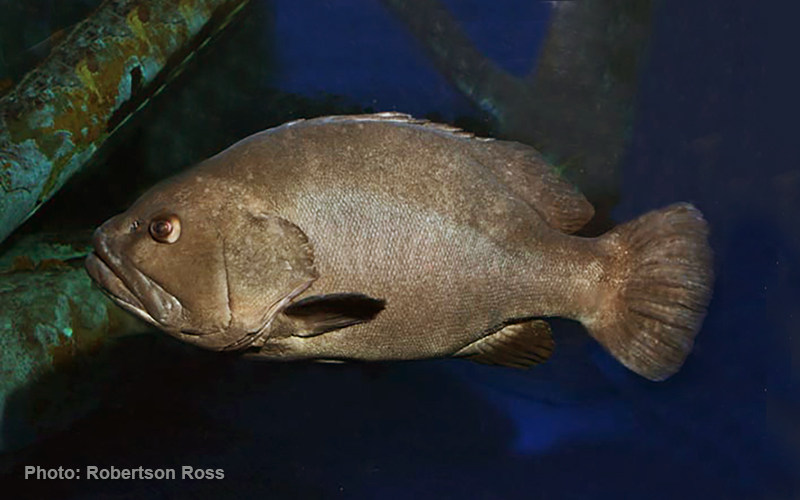Warsaw grouper
(Hyporthodus nigritus)

Classification
General data
Hyporthodus nigritus, the Warsaw grouper, is a species of marine ray-finned fish, a grouper from the subfamily Epinephelinae which is part of the family Serranidae, which also includes the anthias and sea basses. It is found in the Western Atlantic from Massachusetts to the Gulf of Mexico, Cuba, Trinidad, and south to Brazil (Rio de Janeiro). Its natural habitats are open seas, shallow seas, subtidal aquatic beds, and coral reefs. It is threatened by habitat loss.
Hyporthodus nigritus is classified as a deep-water grouper, since they inhabit reefs on the continental shelf break in waters 180 to 1700 ft (55 to 525 m) deep; juveniles are occasionally seen on jetties and shallow-water reefs.
They are the only grouper with 10 dorsal spines.
They are dark reddish-brown or brownish-grey to almost black in color dorsally, and dull reddish-grey ventrally.
Max length : 230 cm; max. published weight: 198 kg; max. reported age: 91 years
Hyporthodus nigritus is threatened by fishing or by catch release mortality (due to pressure change). Fishing is primarily by hook and line and bottom longlines, though the species is caught incidentally in the deepwater snapper/grouper commercial fishery. Almost all of the catch is in the Gulf of Mexico. The IUCN rates it Near Threatened and the American Fisheries Society lists it as Endangered.










